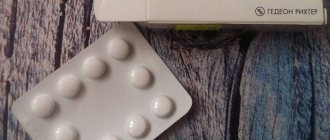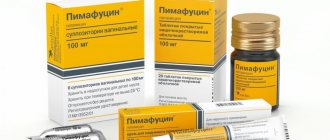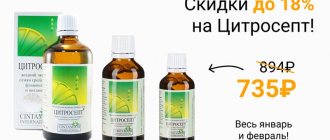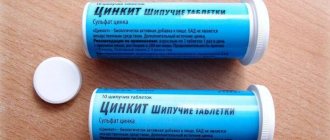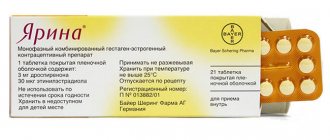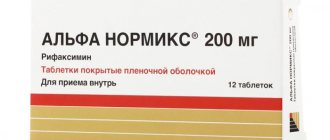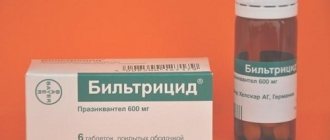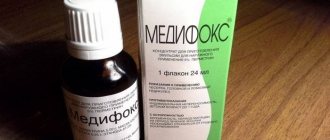Composition and release form of Hemomycin
Chemomycin is available in three dosage forms:
- Light blue hard gelatin capsules containing 250 mg azithromycin. Additional components: corn starch, magnesium stearate, anhydrous lactose, sodium lauryl sulfate. 6 capsules in a blister.
- Round, biconvex, greyish-blue film-coated tablets containing 500 mg azithromycin. Additional components: povidone, talc, microcrystalline cellulose, colloidal silicon dioxide, sodium carboxymethyl starch, magnesium stearate. 3 tablets in blisters.
- White powder for the preparation of a suspension intended for oral administration, containing 100 or 200 mg of azithromycin. Additional components: anhydrous sodium phosphate, flavor, sorbitol, sodium saccharinate, xanthan gum, potassium carbonate, colloidal silicon dioxide. In bottles with a dispenser.
The following drugs are analogues of Hemomycin: Azivok, Azitrox, Azitral, Azithromycin, Azimicin, AzitRus, Azicide, Zetamax Retard, ZI-Factor, Zitrocin, Zitrolide, Zitnob, Sumazid, Sumaclid, Sumamed, Sumametcin, Sumamox, Sumatrolide solutab, Tremak-Sanovel , Ecolab.
Video review of the drug
Maintaining the health of your child is one of the most important tasks of every parent. Nowadays you can find a huge variety of drugs on the pharmaceutical market. But how do you know which of them is effective and which will really help your baby? I suggest watching a video in which a specialist answers important questions and talks about all the intricacies of taking a drug such as Hemomycin.
A very important point in the formation of health and immunity in a baby is not only the correct lifestyle and habits, but also the period of his intrauterine life. After all, the fact that the body was saturated with essential vitamins and microelements also plays a significant role. Many doctors recommend avoiding citrus fruits during pregnancy, as they are a product that can cause allergies during this period.
Of course, 99% of mothers will not, under any circumstances, risk their health and the health of their baby. However, I can say with absolute certainty that if you feel an irresistible craving to eat a certain product, do it. Perhaps this is what your baby needs right now, and will play an important role in strengthening the health and immunity of your baby.
Share your observations on the use of the drug Hemomycin. How did your baby react to taking it, were there any side effects - tell us about it in the comments on the site! And I wish you and your baby good health!
pharmachologic effect
According to the instructions, Hemomycin is a broad-spectrum antibiotic. The active ingredient of the drug belongs to the subgroup of azalides - macrolide antibiotics, which in high concentrations have a bactericidal effect.
The use of Hemomycin is active against intracellular microorganisms (Ureaplasma urealyticum, Chlamydia trachomatis, Borrelia burgdorferi, Mycoplasma pneumoniae), as well as against Treponema pallidum. The drug is active against the following aerobic gram-positive bacteria: Staphylococcus aureus, Streptococcus agalactiae, Streptococcus pneumoniae, Streptococcus spp. groups C, F and G, Streptococcus pyogenes, Streptococcus viridans; for aerobic gram-negative bacteria: Campylobacter jejuni, Bordetella parapertussis, Haemophilus influenzae, Neisseria gonorrhoeae, Moraxella catarrhalis, Gardnerella vaginalis, Bordetella pertussis, Helicobacter pylori, Legionella pneumophila, Haemophilus ducreyi; and also against anaerobic bacteria: Peptostreptococcus spp., Clostridium perfringens, Bacteroides bivius.
Gram-positive bacteria resistant to erythromycin are resistant to the drug and Hemomycin analogues.
What does Hemomycin help with?
The drug is effective against staphylococci and streptococci, listeria and legionella, chlamydia and mycoplasma. This is not a complete list of microorganisms sensitive to the drug. The effectiveness of Hemomycin is four times stronger than Erythromycin. It is important to remember: all microorganisms that are resistant to Erythromycin are resistant to Hemomycin.
Indications for use of Hemomycin
According to the instructions, Hemomycin is prescribed for the following infectious and inflammatory diseases:
- scarlet fever;
- infections of the ENT organs and upper respiratory tract (otitis media, sinusitis, tonsillitis, tonsillitis);
- infections of the urogenital tract (uncomplicated cervicitis or urethritis);
- infectious diseases of the duodenum and stomach caused by Helicobacter pylori (as part of combination therapy);
- infections of the lower respiratory tract (bronchitis, atypical and bacterial pneumonia);
- Lyme disease at an early stage;
- infections of soft tissues and skin (secondarily infected dermatoses, impetigo, erysipelas).
Peculiarities
"Hemomycin" is an antibiotic containing a highly effective active substance. It is safer than cheap generics. The drug is well tolerated among children; side effects are very rare.
The drug contains the original formula of the active substance. This allows the medicine to be delivered to the affected areas of the body in a timely manner. The antibiotic is highly purified, which is observed in proprietary products manufactured by large pharmaceutical companies.
Contraindications
The drug or analogues of Hemomycin are contraindicated:
- with liver and kidney failure;
- with hypersensitivity to macrolide antibiotics;
- in childhood up to six months (for a suspension of 100 mg);
- in childhood up to one year (for a suspension of 200 mg);
- in children under twelve years of age (for tablets and capsules).
According to reviews, Hemomycin should be prescribed with caution when:
- arrhythmias;
- pregnancy.
Caution should also be exercised when using Hemomycin or its analogue in children with severe renal or hepatic impairment.
Analogs
- Suprax . This is a potent third-generation antibiotic; it can be used from 6 months. It has a fairly wide spectrum of action. But it is prescribed by doctors only when less powerful drugs do not work. Its price is an order of magnitude higher than that of Hemomycin. But, at the same time, this antibiotic copes with any kind of disease, including sore throat in children.
- Zinnat. It is allowed to be used from the age of three months. This drug acts on the causative agent of infections selectively: on some people more strongly, on others less, it may not work at all.
- Amoxicillin. This drug is prescribed for any age. However, it is not very effective in the fight against certain types of staphylococci and a number of other viruses, but this antibiotic is most often prescribed for bronchitis in children.
Analogues of Hemomycin for the active substance are:
- Sumamed - sold both in tablets and capsules, and in granules for dilution with water and preparation of a suspension. Recommended for use from 6 months. As for the price, it is slightly inferior to Hemomycin.
- Ecomed . This antibiotic is also available in three of the same forms as Sumamed or Hemomycin. Can be recommended for use from 6 months.
Method of administration of Hemomycin and dosage regimen
According to the instructions, Hemomycin is intended for oral administration. As a rule, the drug is taken once a day one hour before a meal or two hours after, since the absorption of azithromycin is reduced when taken simultaneously with food.
Chemomycin is prescribed to children over 12 years of age and adults for infectious diseases of the lower and upper respiratory tract, 2 capsules or 1 tablet per day for three days.
For infections of soft tissues and skin, for Lyme disease in the initial stages, 4 capsules or 2 tablets are prescribed on the first day, and in subsequent days the dosage is halved. The duration of treatment is five days.
For acute uncomplicated cervicitis or urethritis, the dosage of Hemomycin according to the instructions is 4 capsules or 2 tablets once.
For diseases of the duodenum or stomach associated with Helicobacter pylori, the dosage of the drug is 2 tablets or 4 capsules per day for three days as part of combination therapy.
For children older than six months, the drug is prescribed in the form of a 100 mg suspension, for children older than one year - a 200 mg suspension. For infections of the skin and soft tissues, upper and lower respiratory tract, the pediatric dosage of Hemomycin suspension is 10 mg per kg of body weight once a day for three days.
How does it interact with other drugs?
- With the simultaneous use of magnesium and aluminum containing drugs with Hemomycin, absorption of azithromycin is observed.
- The process of absorption of azithromycin is slowed down by ethanol and food.
- The combined use of digoxin and azithromycin significantly increases the concentration of the former.
- The drug struggles with lincosamides, cephalosporins, and antibiotics of the penicillin group.
- The main component of the antibiotic, azithromycin, is incompatible with heparin.
- But it enhances the effects of tetracyclines, sulfonamides, and streptomycin.
Side effects of Hemomycin
According to reviews, Hemomycin may cause the following side effects:
- Cardiovascular system: chest pain, palpitations.
- Digestive system: nausea, diarrhea, vomiting, dyspepsia, abdominal pain, cholestatic jaundice, melena, increased activity of liver enzymes. In children, Hemomycin, according to reviews, can cause gastritis, constipation, candidiasis of the oral mucosa, and changes in taste.
- Central nervous system: hyperkinesia, headache, neurosis, vertigo, dizziness, anxiety, sleep disturbance, drowsiness.
- Reproductive system: vaginal candidiasis.
- Allergic reactions: Quincke's edema, skin rash. In children, possible: itchy skin, conjunctivitis, urticaria.
- Urinary system: nephritis.
- Other side effects: photosensitivity, increased fatigue.
Drug interactions
- digoxin, cyclosporine, warfarin, antiarrhythmic drugs of classes IA and III, cisapride, terfenadine, antipsychotics, antidepressants, fluoroquinolones: use with caution;
- aluminum and magnesium-containing antacids: Hemomycin should be taken 1 hour before or 2 hours after taking these drugs due to a decrease in the concentration of Hemomycin in the blood by 25%. Food slows and reduces absorption;
- anticoagulants of indirect action of the coumarin series (warfarin): it is necessary to monitor the prothrombin time, the anticoagulant effect may be enhanced;
- Digoxin: monitoring of its content in the blood is necessary due to an increase in its concentration when taken together with Hemomycin;
- ergotamine and dihydroergotamine: combined use is contraindicated due to increased toxic effects (vasospasm and dysesthesia);
- terfenadine, macrolide antibiotics: risk of arrhythmias, QT interval prolongation;
- fluconazole: the maximum concentration of azithromycin in the blood decreases by 18% (no clinical significance);
- statins: there are reports of isolated cases of rhabdomyolysis;
- rifabutin: there are reports of neutropenia (a cause-and-effect relationship has not been established);
- cyclosporine: monitoring of the concentration of cyclosporine in the blood plasma and appropriate dose adjustment are necessary;
- zidovudine: the effect on pharmacokinetics is insignificant, the concentration of the active metabolite, phosphorylated zidovudine, in peripheral blood mononuclear cells increases (the clinical significance of this fact has not been determined);
- nelfinavir and azithromycin (750 mg 3 times a day and 1200 mg, respectively): an increase in the equilibrium concentration of azithromycin in blood plasma. No dose adjustment is required;
- cytochrome P4506 isoenzymes: weak interaction;
- cimetidine when taken 2 hours before azithromycin: no changes in the pharmacokinetics of azithromycin were detected;
- carbamazepine, efavirenz, didanosine, fluconazole, indinavir, cetirizine, midazolam, theophylline, triazolam, nelfinavir, trimethoprim + sulfamethoxazole, sildenafil, atorvastatin, methylprednisolone: do not interact;
Additionally for tablets and powder 100 and 200 mg/5 ml:
- triazolam: clearance decreases and the therapeutic effect of triazolam increases;
- indirect anticoagulants, cycloserine, felodipine, methylprednisolone, as well as drugs subject to microsomal oxidation (terfenadine, oral hypoglycemic agents, cyclosporine, bromocriptine, hexobarbital, carbamazepine, valproic acid, disopyramide, ergot alkaloids, phenytoin, theophylline and other xanthine derivatives): increase plasma concentration and toxicity, the elimination of these drugs slows down;
- lincosamines: reduce the effectiveness of Hemomycin;
- chloramphenicol and tetracycline: increase the effectiveness of Hemomycin;
- heparin: incompatible.
Additionally for lyophilisate:
- nelfinavir: increased incidence of side effects from azithromycin;
- cyclosporine, terfenadine, ergot alkaloids, cisapride, pimozide, quinidine, astemizole and other drugs whose metabolism occurs with the participation of the CYP3A4 isoenzyme: the possibility of inhibition of the CYP3A4 isoenzyme.

